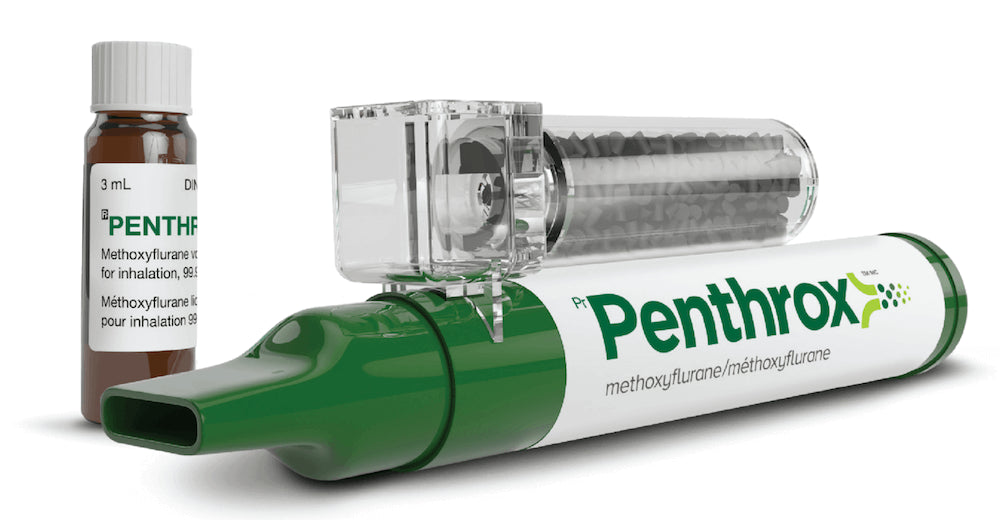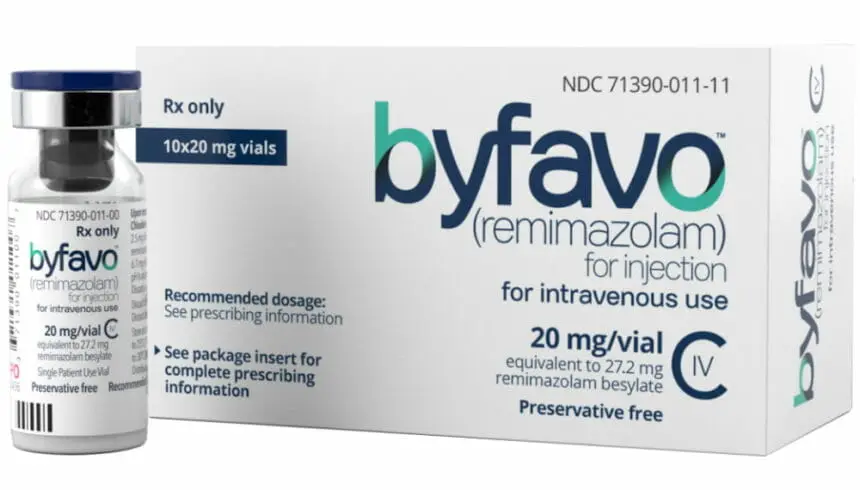Penthrox – what is it?

Penthrox in Dentistry: Something new for our sedation toolbox?
As dental professionals, we are constantly seeking ways to improve patient comfort, reduce anxiety, and enhance the overall experience of care. One emerging tool generating interest in recent years is Penthrox (methoxyflurane)—a fast-acting inhalational analgesic commonly used in emergency medicine and now making its way into dental settings.
But what exactly is Penthrox? Is it suitable—or even necessary—in dentistry? Let’s take a closer look.
What is Penthrox?
Penthrox is the brand name for methoxyflurane, a volatile inhalational analgesic delivered via a handheld, self-administered device known as the green whistle. It’s widely used in ambulance services and emergency departments for short-term pain relief, particularly for trauma and fractures.
Patients inhale the agent through a disposable device, allowing for rapid onset of pain relief (within minutes). Importantly, the dose is titrated by the patient, offering control while limiting the risk of over-sedation.
Why the Interest in Dentistry?
Dental procedures are often performed under local anaesthesia, but patient anxiety, needle phobia, or low pain thresholds can significantly complicate treatment. Penthrox offers several potential advantages:
- Rapid onset of action
- Minimal impact on consciousness – allows communication with the patient
- Non-invasive and needle-free
- Short duration – ideal for brief or moderately uncomfortable procedures
- No need for IV access or oxygen supplementation
In dental settings, it could be particularly useful for:
- Minor oral surgery
- Emergency dental extractions
- Anxious adults requiring short procedures
- Patients unable or unwilling to undergo IV or oral sedation
How Does it Compare with Traditional Dental Sedation?
| Feature | Penthrox | Inhalation Sedation (N₂O/O₂) | IV Sedation (Midazolam) |
|---|---|---|---|
| Route | Inhaled (via whistle) | Inhaled (via nasal hood) | Intravenous |
| Onset | ~2–5 minutes | ~3–5 minutes | ~2–3 minutes |
| Level of sedation | Analgesia/light sedation | Light/moderate sedation | Moderate sedation |
| Training requirements | Medical/dental CPD advised | IACSD-compliant training | IACSD-compliant training |
| Monitoring needs | Basic observation | Pulse oximeter + capnography | Full monitoring required |
| Recovery time | ~20–30 minutes | ~15–30 minutes | ~45–60+ minutes |
Penthrox offers analgesia and mild anxiolysis, but it is not a substitute for sedation when deeper anxiolysis or procedural control is needed.
Is it Safe in Dental Practice?
When used correctly, Penthrox has a good safety profile. However, several key considerations apply:
- It is contraindicated in patients with renal impairment or known hypersensitivity to fluorinated anaesthetics.
- The total cumulative dose should not exceed 6 mL in one day or 15 mL in a week.
- Adequate ventilation is needed due to potential occupational exposure.
- It should be administered by trained personnel with resuscitation equipment available.
Regulatory Status and Legal Considerations
In the UK, Penthrox is a Prescription Only Medicine (POM). It can only be supplied and administered by appropriate healthcare professionals, and protocols should be in place.
As of now, its routine use in general dental practice is not yet widely established, and guidance from regulatory bodies like the IACSD does not yet cover methoxyflurane in dental sedation.
It is possible that the new IACSD 2025 standards will include Penthrox but its important to remember that it is not licensed as a sedative, its an analgesic with sedative properties.
How have we been using it?
We have been using Penthrox successfully since 2014 for two main treatment scenarios – the needle phobic patient and the long duration invasive treatments like dual arch implant therapy.
For needles phobic patients not wanting to receive a cannula without help, a few minutes of Penthrox tends to reduce anxiety sufficiently and provide good analgesia for cannula insertion. It certainly has the potential for some patients to replace Intranasal or Oral BDZ sedation.
During dual arch full mouth implant therapy, analgesia and local anaesthesia can be an issue. Typically, after the upper arch is completed, the aching from the surgery becomes harder to control with local anaesthetics. Whilst the patient is uncomfortable, often the lower arch is then attempted but the patient can be uncomfortably, being roused from sedation and generally harder to treat. We have found that between arches, more profound analgesia can be achieved with Penthrox before the lower arch is attempted. Post operatively, whilst the prosthesis is being fabricated, Penthrox can be continued to help relieve the aching. Great care has to be taken however when combining two CNS depressants (or three if using Fentanyl as well) as they have a cumulative effect. By using Remimazolam however the patient can be allowed to recover quickly, Penthrox is then used and once patient is recovering from that, then small doses of Remimazolam can then be re-introduced to reduce anxiety for the remainder of the treatment.
Conclusion: A Tool Worth Watching
Penthrox is not a replacement for conventional sedation, but it may offer a valuable alternative for certain patients and situations. For dental professionals working in urgent, community, or low-resource settings—or for those managing patients with high anxiety—it’s a tool worth exploring as part of a modern pain and anxiety management strategy.
As research evolves and demand for flexible patient care grows, Penthrox could become an important part of the dental toolkit.





